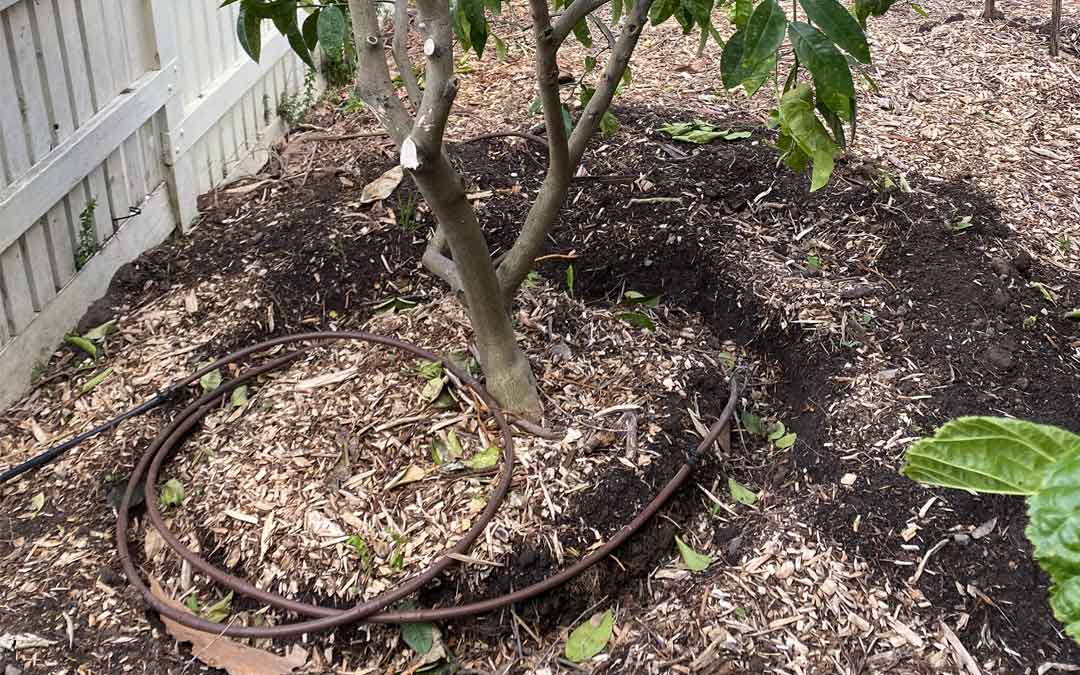Transplanting advanced trees

About 12 months ago, Bulleen Art and Garden (BAAG) donated 3 advanced fruit trees to the Sustainable Macleod Community Garden. They were growing along the BAAG driveway that led to the landscaping yard and had to be removed to make way for North East Link works. I am very pleased to say that all 3 have survived and are thriving.
Transplanting advanced or mature trees is quite an undertaking and success is not assured. Deciduous trees are best moved in autumn after leaf fall and other trees in spring before budding.
Take the following steps and there’s a good chance your transplanting will be successful:
- Where possible prune some of the canopy back.
- Using a sharp spade, spade 360 degrees around the dripline, essentially cutting the roots and forming a trench. Do this as far ahead as you can – minimum a month and up to 6 months before moving it – depending on the size of the tree. This will allow new, smaller roots to develop and larger roots to heal over.
- Water regularly in the trench and make sure the root ball is well hydrated before lifting the tree.
- Preferably have several people ‘lifting’ the tree at the time of transplanting so that the tree eases out with the root ball intact and covered with as much soil as possible. Having several people, each with a fork, working around the base works well.
- Immediately cover the root ball with damp hessian or obtain a large synthetic bag that the tree can be placed in for transport if it is going elsewhere; otherwise, immediately reposition the tree.
- Prior to transplanting, prepare a new hole by making it wider and deeper than the rootball. You may want to add compost at this time.
- Place the tree in its new home facing the way you want it – it’s hard to move afterwards – and bury it at the same level as it was previously.
- Water the tree in well, add some compost to the surface and then mulch and water again.
- Water deeply twice a week for a couple of months or until the tree is producing new growth.
The trees that BAAG donated were 2 quince trees and an avocado. The quinces have been planted in front of the shelter to soften the look of it, and are being trained in an arch formation. Soon we will put in a frame for the new growth to arch over.
The avocado was a greater challenge and in the height of summer we thought we had lost it, when one hot day, the few leaves withered. However, we kept watering it and lo and behold in spring it began to shoot lower down the trunk. At that stage, we cut about 60cm from the top of the trunk, which included some small branches that were clearly dead, and now it is producing new growth. As it is a mature tree we expect to have avocados within a year or two.
Our thanks go to BAAG, not only for saving and donating these trees but also for their excellent preparation before they were dug out, for delivering them and for taking an interest in their continuing health.
Written by Robin Gale-Baker
